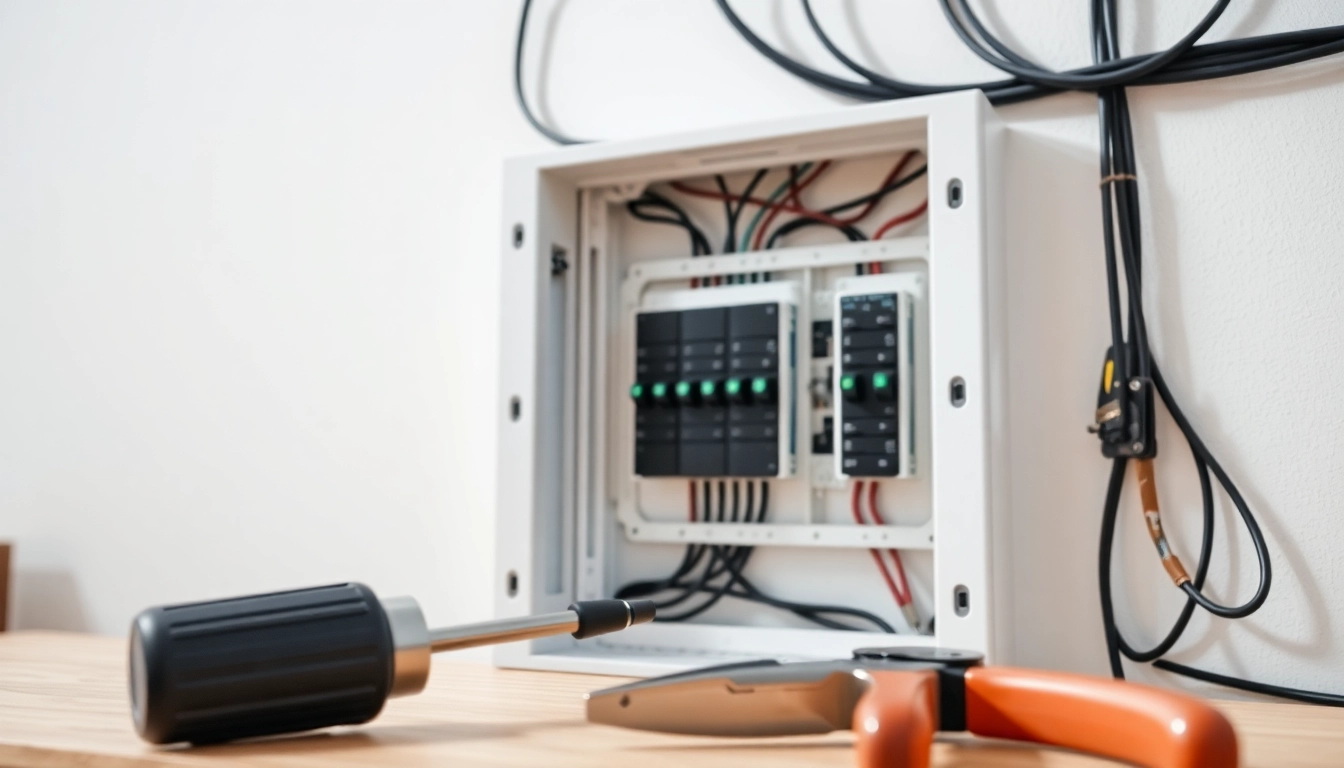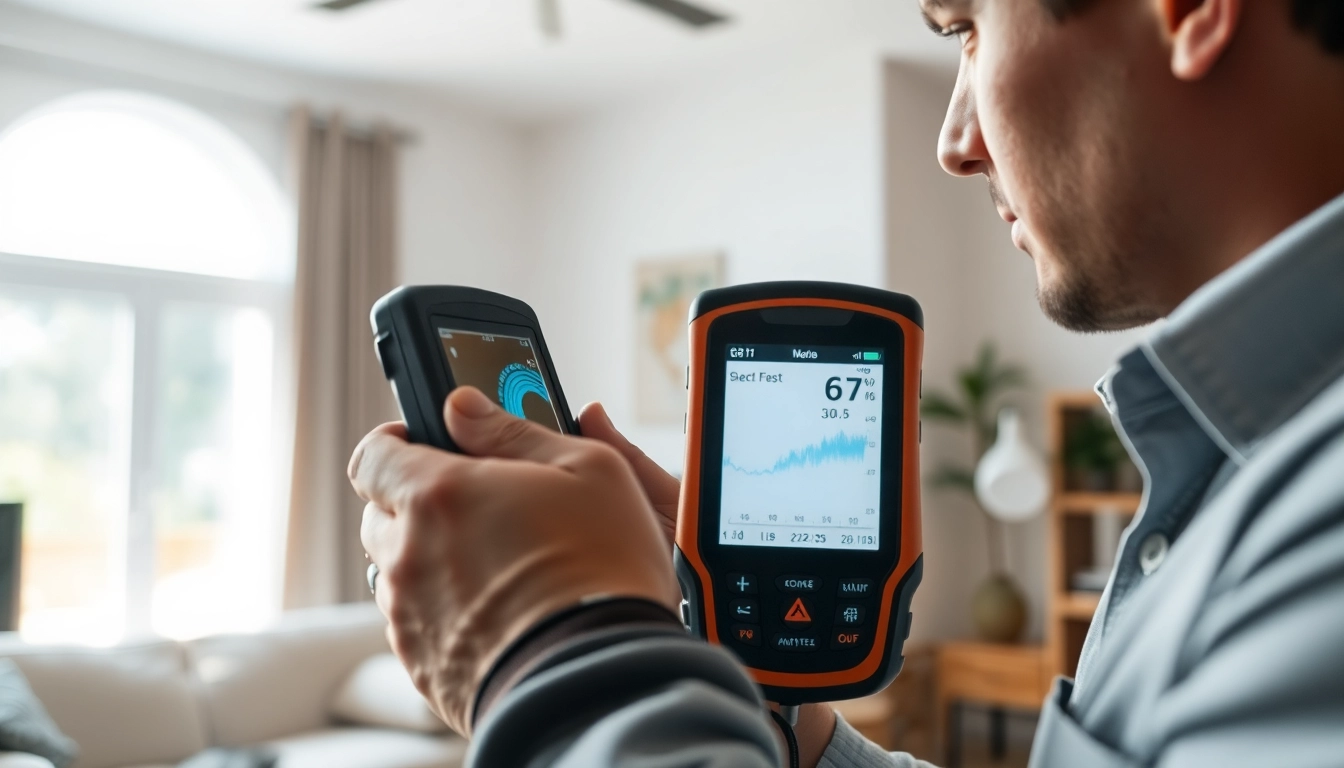What is an Electrical Panel and Its Purpose?
Definition and Functionality of an Electrical Panel
An electrical panel, commonly known as a breaker box or distribution board, serves as the central hub of your home’s electrical system. It receives electricity from the utility company and distributes it to various circuits throughout the home. This panel plays a critical role in regulating and protecting the electrical system, making sure power is directed efficiently and safely to home appliances, lighting, and outlets.
At its core, the electrical panel comprises a metal box that houses circuit breakers or fuses. These components act as safety mechanisms that automatically interrupt the flow of electricity in case of overloads or short circuits, thereby preventing potential hazards such as electrical fires. Understanding how your electrical panel functions is essential for ensuring the safety and efficiency of your electrical system. For a more detailed discussion on electrical panel upgrades and safety, check out this Electrical Panel resource.
Components of an Electrical Panel
The main components of an electrical panel include the following:
- Main Breaker: This is the primary circuit breaker that controls the overall power supply to the panel. It can disconnect power to the entire electrical system.
- Circuit Breakers: Smaller in size, these breakers protect individual circuits. They prevent overheating and overloading by breaking the circuit when the current exceeds defined limits.
- Bus Bars: These conductors distribute electricity to the circuit breakers. Made of copper or aluminum, bus bars connect the main breaker to individual circuit breakers.
- Neutral Bus Bar: This component serves as a connection point for the return path of electricity from the circuits back to the panel.
- Grounding Terminal: It connects to the grounding system of the home, ensuring safety by directing excess electrical current away.
The Importance of a Safe Electrical Panel
Safety is paramount when it comes to electrical panels. An outdated or improperly functioning panel can lead to safety hazards. Here are a few reasons why maintaining a safe electrical panel is crucial:
- Fire Prevention: An overloaded circuit can cause wires to overheat, leading to fires. A well-maintained electrical panel equipped with the right breakers reduces this risk significantly.
- Reliable Power Supply: An efficient panel ensures consistent electricity flow, reducing flickering lights and unexpected shutdowns of appliances.
- Compliance with Regulations: Electrical codes require that panels meet specific safety standards. Regular inspections and upgrades can help you remain compliant.
Signs You Need to Upgrade Your Electrical Panel
Frequent Circuit Breaker Trips
If you notice your circuit breakers frequently tripping, this indicates that they are overloaded. A panel that can’t handle the demands of modern appliances and electronics needs upgrading. Frequent trips not only interrupt daily activities but also signal a potential electrical hazard.
Old Wiring and Outdated Technology
With the advent of new technologies and appliances, an electrical panel that was sufficient years ago may not meet today’s standards. Outdated wiring can be inefficient and hazardous, leading to unsafe conditions. If your panel is over 20-30 years old, it’s worth considering an upgrade to enhance safety and efficiency.
Increased Electricity Usage
As home appliances become more power-hungry, the electrical demands of a household can rise dramatically. If you’ve recently added significant electrical load—such as electric vehicles, additional heating or cooling units, or home entertainment systems—upgrading your electrical panel to accommodate this new demand is wise.
Selecting the Right Electrical Panel for Your Needs
Understanding Amperage Requirements
When choosing an electrical panel, understanding the amperage needs of your home is key. Most modern homes require a minimum of 200 amps to manage the power demands of typical appliances and systems. Assessing your home’s current and future electrical needs will help you select an appropriate panel size.
Types of Electrical Panels Available
There are several types of electrical panels, each suited for different applications:
- Main Breaker Panels: These have a main breaker to disconnect power and can accommodate numerous branch circuits.
- Subpanels: A subpanel is an additional panel that branches from the main panel. It is useful for managing electrical load in larger homes or for specific areas like garages.
- Smart Panels: Equipped with technology to monitor energy consumption, smart panels offer insights and allow for energy efficiency improvements.
Cost Considerations and Budgeting
Upgrading an electrical panel can vary in cost based on several factors, including the cost of the panel itself, the complexity of the installation, local labor rates, and necessary upgrades to wiring. On average, homeowners can expect to pay anywhere from $1,500 to $3,000 for an electrical panel upgrade, including labor and materials. Budgeting for potential additional costs, such as permits or inspections, is also crucial.
How to Safely Upgrade Your Electrical Panel
Hiring a Licensed Electrician
One of the most critical steps in upgrading an electrical panel is hiring a licensed electrician. They possess the knowledge and experience to ensure that the installation meets all safety codes and regulations. A professional will assess your current system, recommend the right panel, and perform the installation safely and efficiently.
Preparing Your Home for an Upgrade
Before the upgrade commences, ensure your home is prepared. This may involve clearing the area around the electrical panel and ensuring access to the main power supply. You may also need to arrange for temporary power solutions during the installation if your entire panel will be replaced.
Post-Installation Safety Checks
Once your new electrical panel has been installed, a licensed electrician should conduct thorough safety checks. This may include ensuring that all connections are secure, verifying that the panel is grounded correctly, and testing all circuits to ensure they function as expected. Regular follow-up inspections are also recommended to maintain operational efficiency and safety.
Future-Proofing Your Electrical System
Planning for Technological Advancements
As technology continues to evolve, future-proofing your electrical system can save time and money in the long run. Consider upgrades that allow for maximum flexibility, such as smart technology systems, which can be seamlessly integrated into newer electrical panels.
Incorporating Smart Home Features
The emergence of internet-connected devices in homes necessitates a robust electrical system. Consider a smart electrical panel that integrates with home automation systems. These panels can facilitate energy management, allowing homeowners to monitor and control energy usage directly from their smartphones.
Regular Maintenance and Inspection Best Practices
Regular maintenance of your electrical panel is crucial to ensure its longevity and safety. Schedule annual inspections with a qualified electrician and keep an eye out for any signs of wear, such as rust on the panel or signs of overheating. Create a maintenance log for your electrical system to track inspections and any repairs needed.



